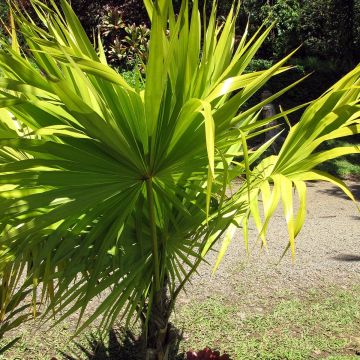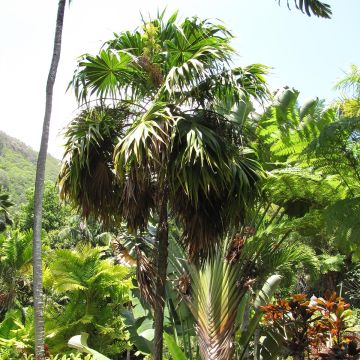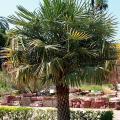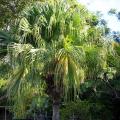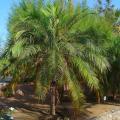Thrinax
Does this plant fit my garden? Set up your Plantfit profile →
Available in 1 sizes
Little known, Thrinax are beautiful palm trees native to the Caribbean that are appreciated for their large spectacular fronds. Tolerant and easy to grow, they make excellent indoor or conservatory plants, such as Thrinax radiata or the magnificent Thrinax excelsa. They are graceful, fan-shaped palm trees of small to medium size, which produce a single false trunk or ringed stem, or grow in clumps. The name of the genus, Thrinax, refers to the shape of the leaves, which resemble a three-pronged fork. The leaves are often green, but can also be beautifully silver, as in Thrinax argentea. These slow-growing palm trees tolerate pot cultivation and repeated watering with hard water very well.
Haven't found what you were looking for?







































